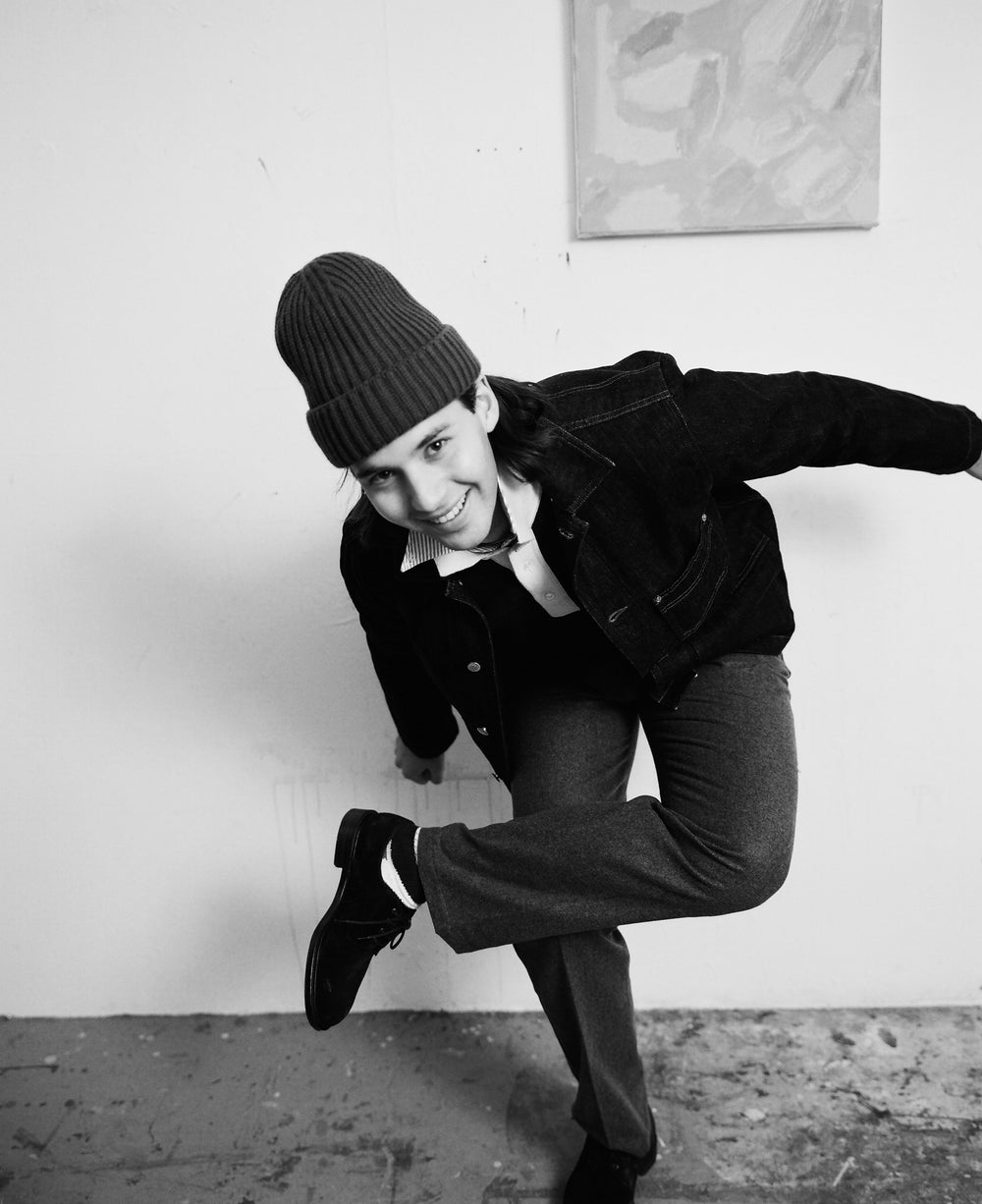ArtClothingCommunityConversationsCultureGames SuitIn the StudioLondonTravel
Positive Painting with Zach Zono
By Finlay Renwick
Feb 8, 2023

There are five ‘Studio Rules’ loosely applied in thick red paint on the inside door of Zach Zono’s studio, a derelict — in a charming way — white-washed box in East London. It has large windows, stacks of canvases, paint-splattered trainers and overalls, and a bright red bar stool that was ‘acquired’ from outside a Hackney pub on a recent night out. “I don’t really remember how I got it,” says Zono with a smile. The sun is shining in that low, intense and fleeting way that it sometimes does in midwinter. It’s a beautiful morning to look at some paintings.

At 23, Zono is a young artist whose vibrant, blotchy, abstraction-meets-figuration oil paintings are attracting attention, including ours. Last year he held his first solo show, Within Reach, at The Fitzrovia Gallery in London, inspired by the flowers that grow near his family home in Cape Town, a practice that he continues to refract and interrogate. His latest work is progressing towards abstract expressionism. A flower, but not quite a flower. Sixties New York via Hackney with humour and feeling.
“I grew up by the ocean,” says Zono, who has swept back hair and an easy-going South African lilt. “When COVID happened, I’d just moved to London, so I ended up painting two collections of the lilies that grow by the water around there. It was like my homage to where I’m from.” As time has progressed, each series of paintings has become, as Zono puts it, “more zoomed in, but always with a landscape-y, floral element.”
“I could paint lilies every day, so I’m trying to strip them back. I’m using less colour and making each stroke meaningful. These are memories… fragments of flowers. I’m a pretty positive guy, I like bright colours, but I’m looking at this work as a series of chapters drawing on a theme. Darker and lighter.”

Another key artistic inspiration for Zono is music. In another life (a few years ago) he performed dance-y, bedroom pop under the moniker Cool Boy, (look it up, it’s good!) a project that he’s paused for now. He jokingly recalls meeting a girlfriend’s father for the first time, who archly greeted him by saying, “So… you’re Cool Boy?” “A bit like how there are layers of instruments in a song, I like to apply paint slowly, and come back to a canvas again and again.” His paintings are often given irreverent titles, akin to songs. ‘Say It First,’ ‘Sore Legs,’ ‘Good Boy,’ ‘The Long Road Is That Way,’ and ‘The Yes Test.’
“They’re kind of names and phrases that the people around me say. I use a lot of South African terms that my mum uses. ‘Now now,’ and ‘I’ll be there just now.’ Playing on that musical side. To me, the paintings are always moving. I’m painting, I’m moving them around, but as soon as they leave the studio… they’re still. I give the work a name when it leaves to a home. If I’m walking down the street, I’ll write down titles on a little notepad. Observations and everyday sayings. It’s another way of giving each painting its own unique life.”

On the weekends Zono leaves his canvases be. “I try and treat it like a 9-5,” he says, “so the work can sit.” He might ride his bike around Hackney, hang out with friends, go to the pub and return with a souvenir. He’s started making music again. He’s recently begun delving deeper into colour theory — how the eye perceives; the effects of mixing and contrasting, and the messages paint can communicate.

In person Zono’s work feels deep, vibrant and personal. Fun, definitely, but also compelling. He loves de Kooning and the romance of those New York abstract expressionists. “I remember, as a kid, when you searched the word ‘artist’ on Google, those were the guys who came up. Everyone wearing crumpled suits, hanging out and living the artist life. I want to live the life.”
“That’s the fun part… no one really knows what you’re trying to achieve,” he says, light pouring into the studio, surrounded by canvases, both complete and in progress. “I love keeping the work up to the viewers’ interpretation. Everything is acceptable, because each person is going to see it slightly differently.
“All I want, really, is for viewers to say… ‘That’s a Zach painting.’”


